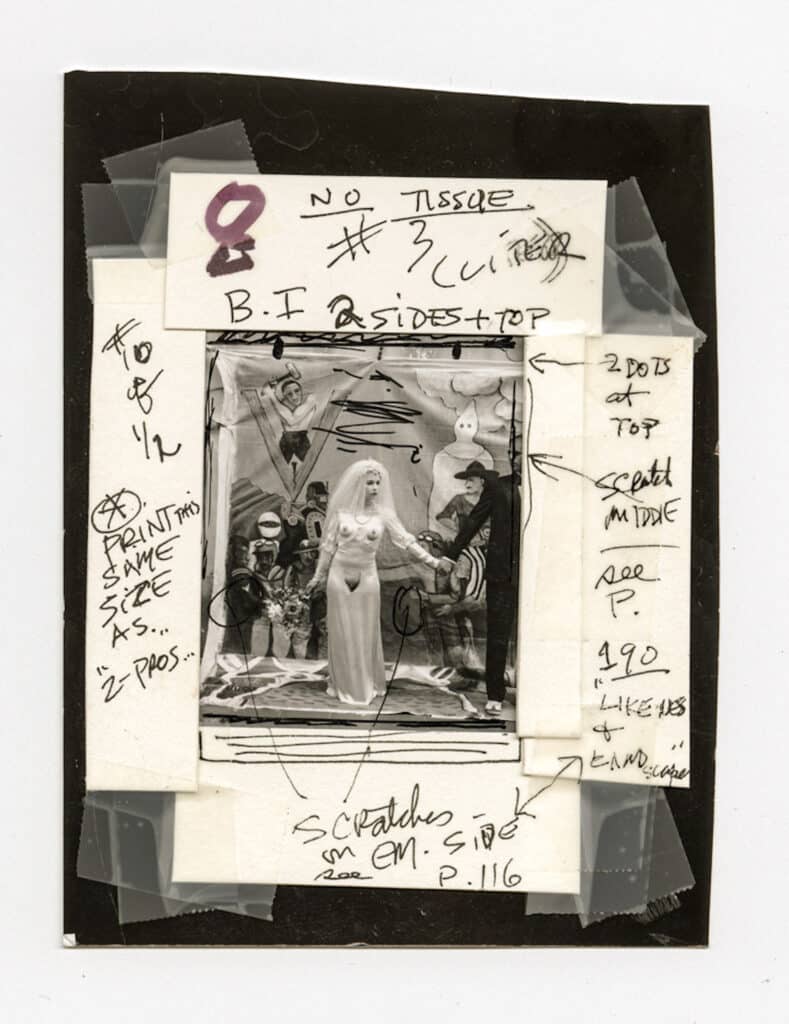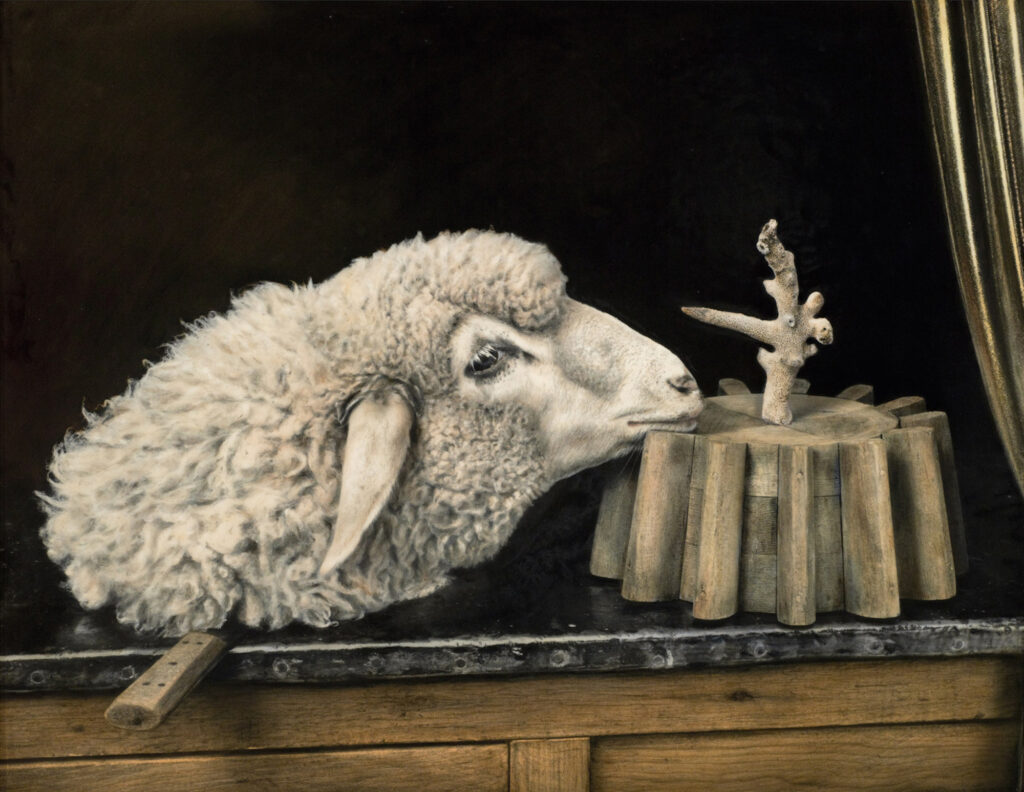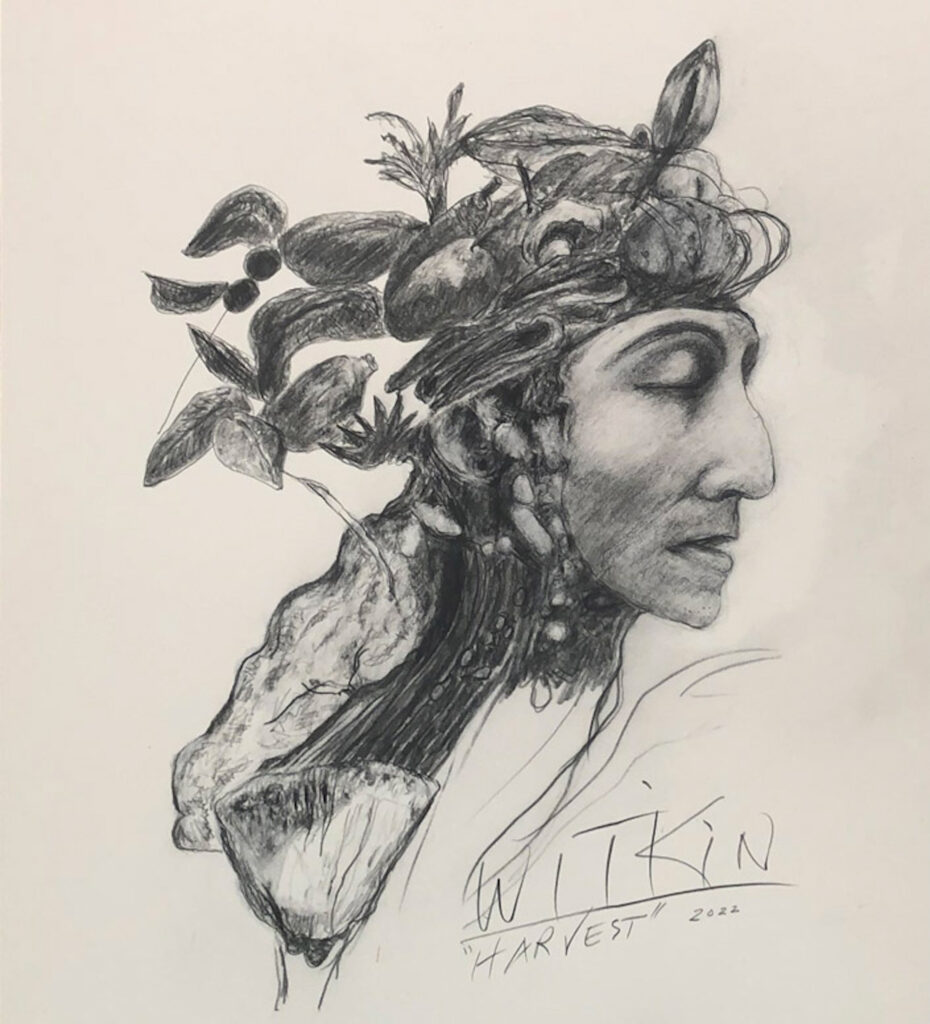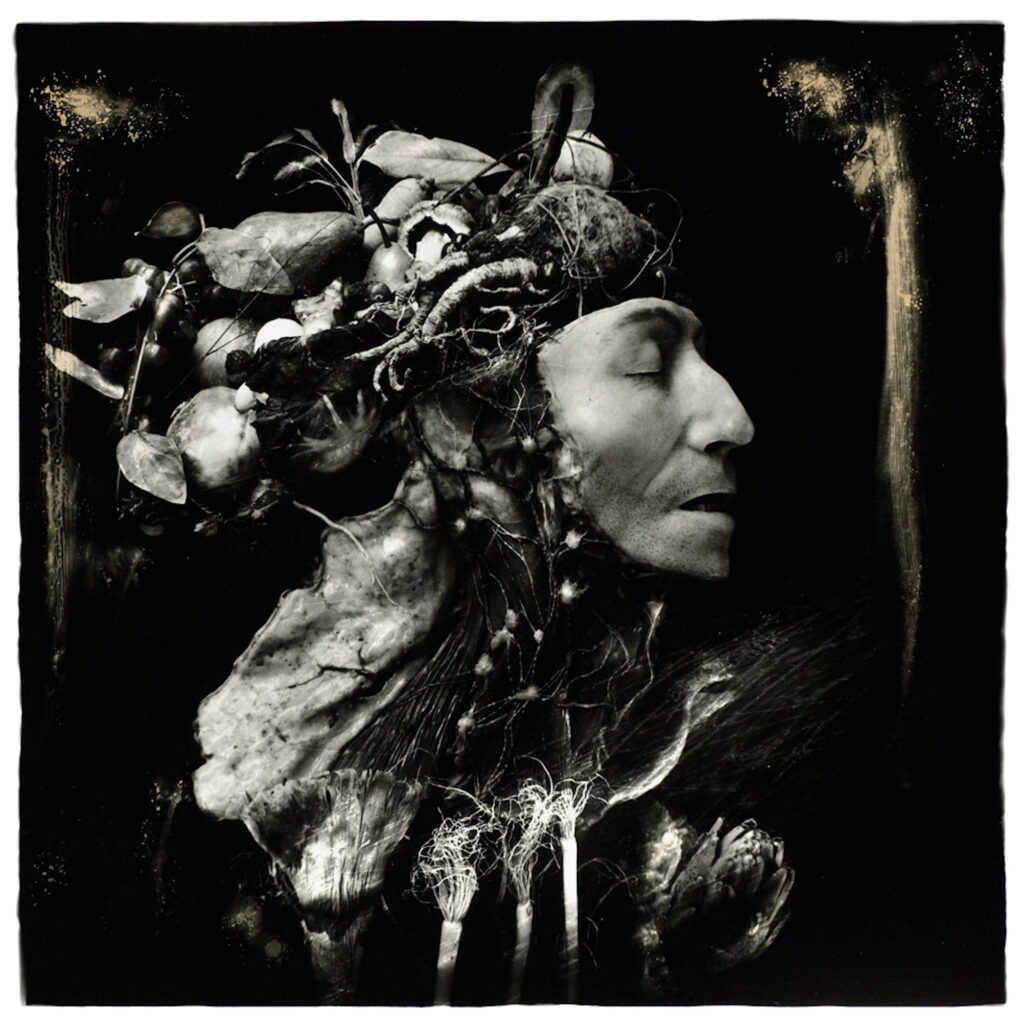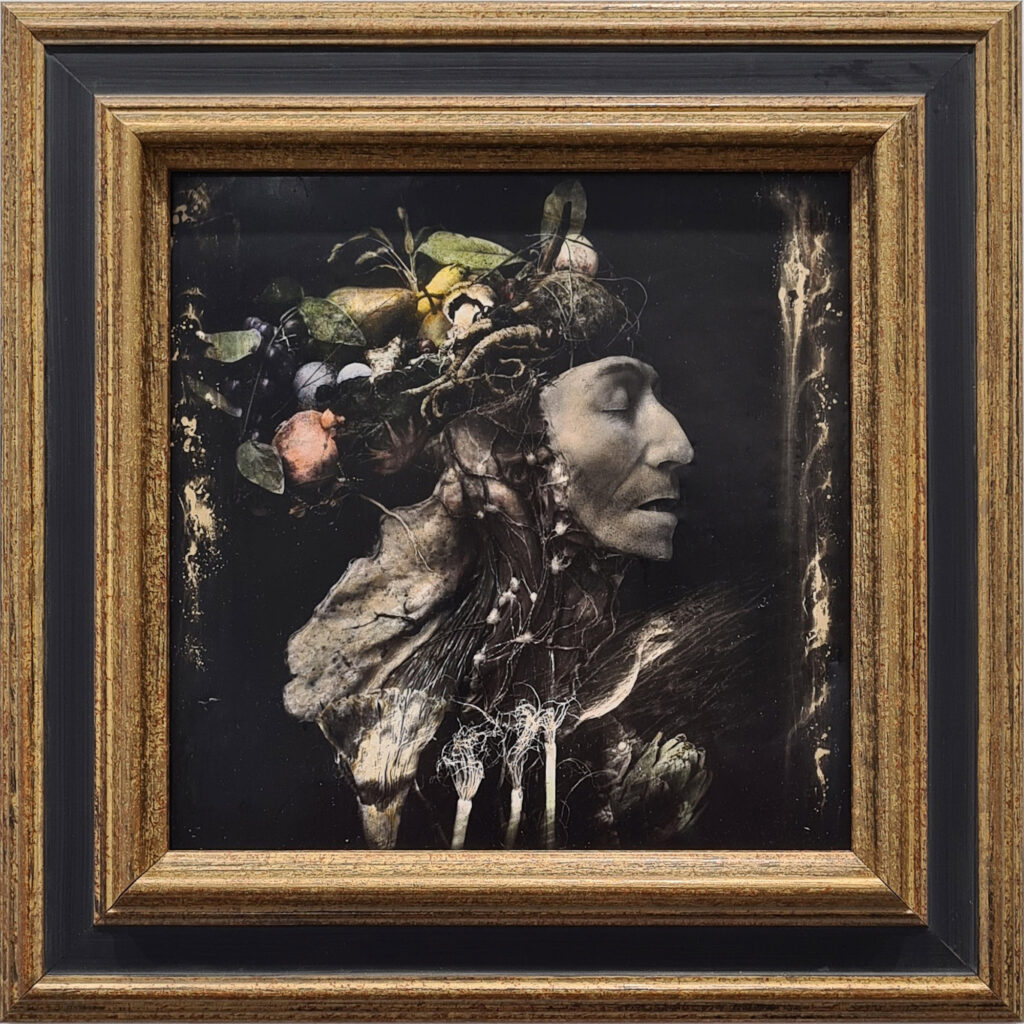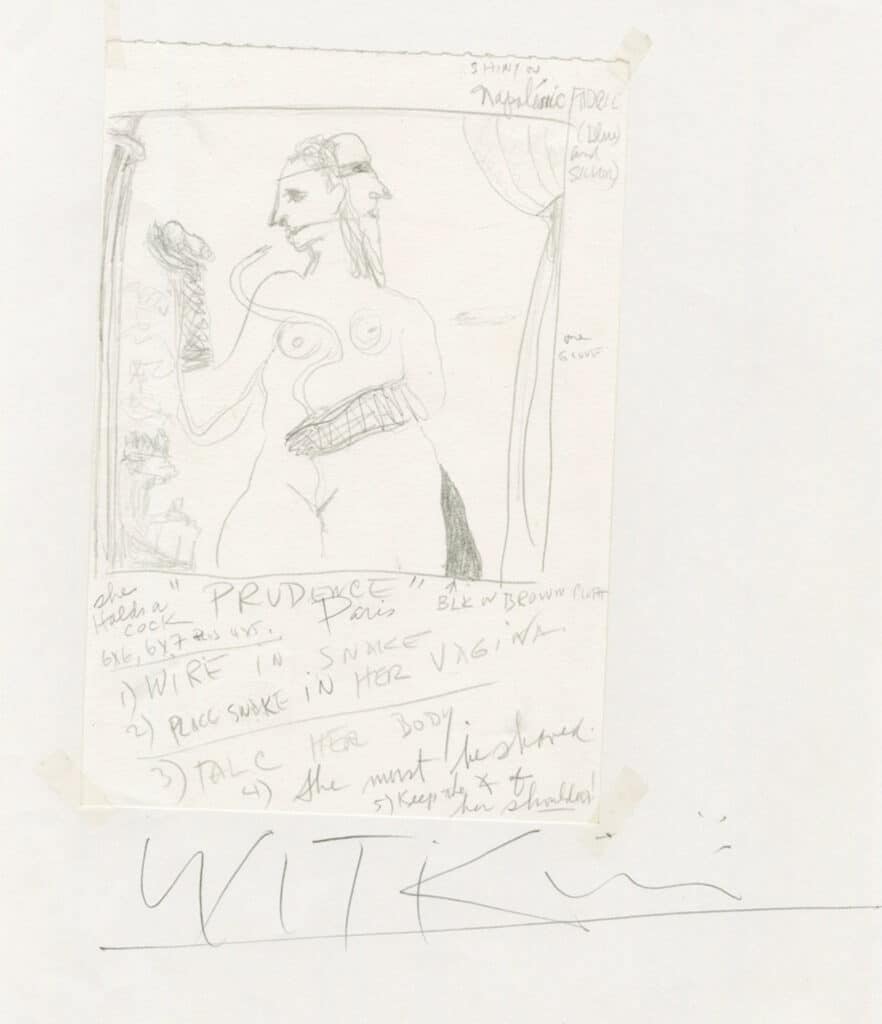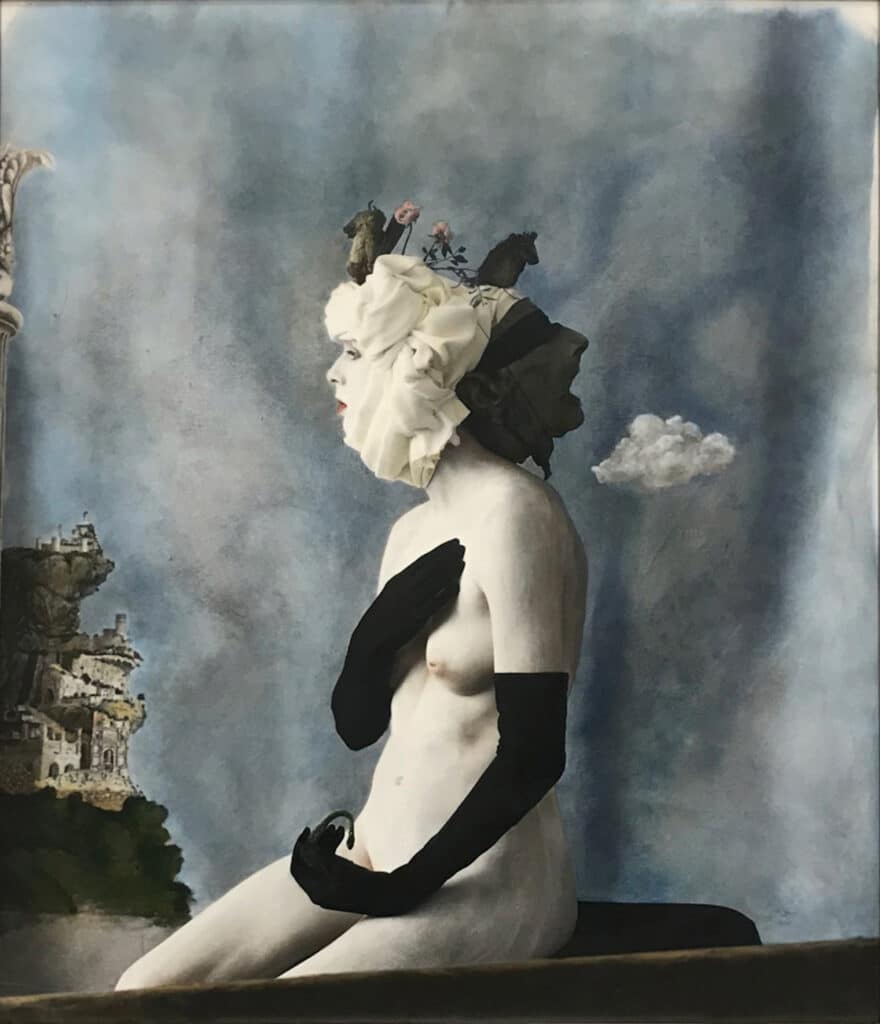In the world of Joel-Peter Witkin, death is not to be feared. There is beauty in the macabre, a little humor too, as evidenced by all the work of the photographer, where the marvelous mixes with sacrilege. With his subversive still lifes, where amputated limbs and transsexuals are depicted in classic poses, Witkin is considered a major photographer of our time.
The exhibition at Galerie Baudoin-Lebon, “Joel-Peter Witkin: The Untold Story of the Photograph explores Witkin’s creative process: whether it’s his encaustic prints, the props for his perfectly composed paintings, or his contact sheets scribbled, the viewer is immersed in a world that is alternately dark and heavenly.
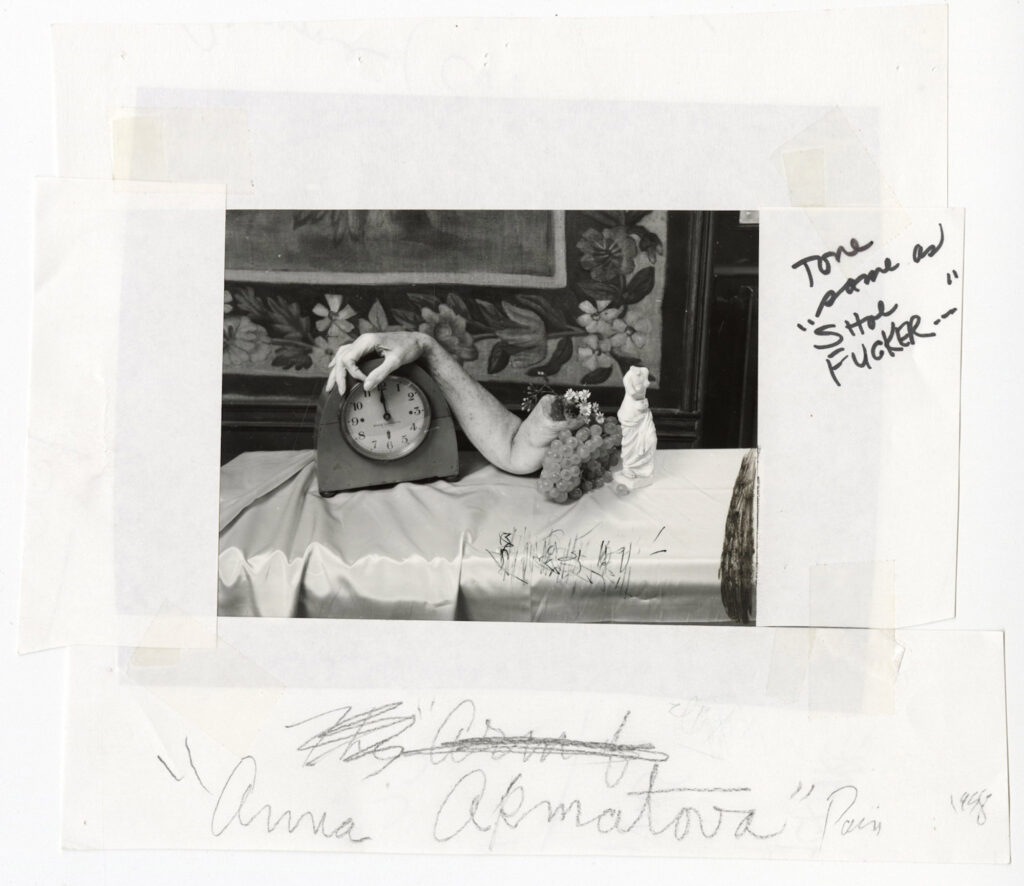
A fervent follower of romanticism, Witkin takes liberties with the works of this period, giving his photographs a pictorial character by enhancing them with a thin film of encaustic, which softens the image and makes the medium hesitate. One of them, a lamb’s head gently resting its snout on a wooden stand, looks so tender that it’s easy to forget the animal isn’t alive. The sharpness of the black background recalls Goya, although this image has nothing in common with the visions of horror of the painter.
A more direct reference to romantic painting is the version of the Raft of the Astonished by Géricault, which Witkin reinterprets under the title The Raft of George Bush. This ” contemporaneous nave of fools in his own words, has as passengers members of the Bush administration (Colin Powell, Dick Cheney, Condoleezza Rice), and Bush’s own mother, Barbara.
It is both Géricault’s painting, exhibited at the Louvre, and the record of the Bush years that inspired Witkin. We see an angel in this image who ” holds a big bone representing cannibalistic capitalism, this mass grave of our pitiful social progress “, he explains in a press release.
One of Witkin’s most famous images, Harvestis exhibited at the Louvre Museum as part of the exhibition entitled ” Things: A Story of Still Life “. A face emerges from an interlacing of leaves and branches, in the same way as vegetables and flowers draw the features of a man in the Vertumnus of Arcimboldo. But while this one has a humorous effect, it’s a quiet beauty that emanates from Harvest.
the grotesque is a recurring theme in Witkin; another of his famous images, TheKiss, depicts a severed human head, which he obtained permission to photograph in a morgue. The two profiles are joined mouth to mouth in a kiss, the image expresses both the dynamism of life and the coldness of death.
It is well known that Witkin, at the age of six, witnessed a car accident which decapitated a little girl. It is easy to make the connection between this horror spectacle and its photographs populated by dismembered specimens; and yet the shock, the awe, the horror, the fascination he experienced that day is not the driving force of his work.
It is his respect for life that guides him, rather than the desire to make a splash. ” Most people don’t understand he says (adding, however, that the French have a different reaction to his work, and tend to apprehend him better, as they ” have deeper connections to art history! “). Its message, says Witkins, is “ that we are eternal beings! That we are all made by God, and that the great enemy is selfishness! »
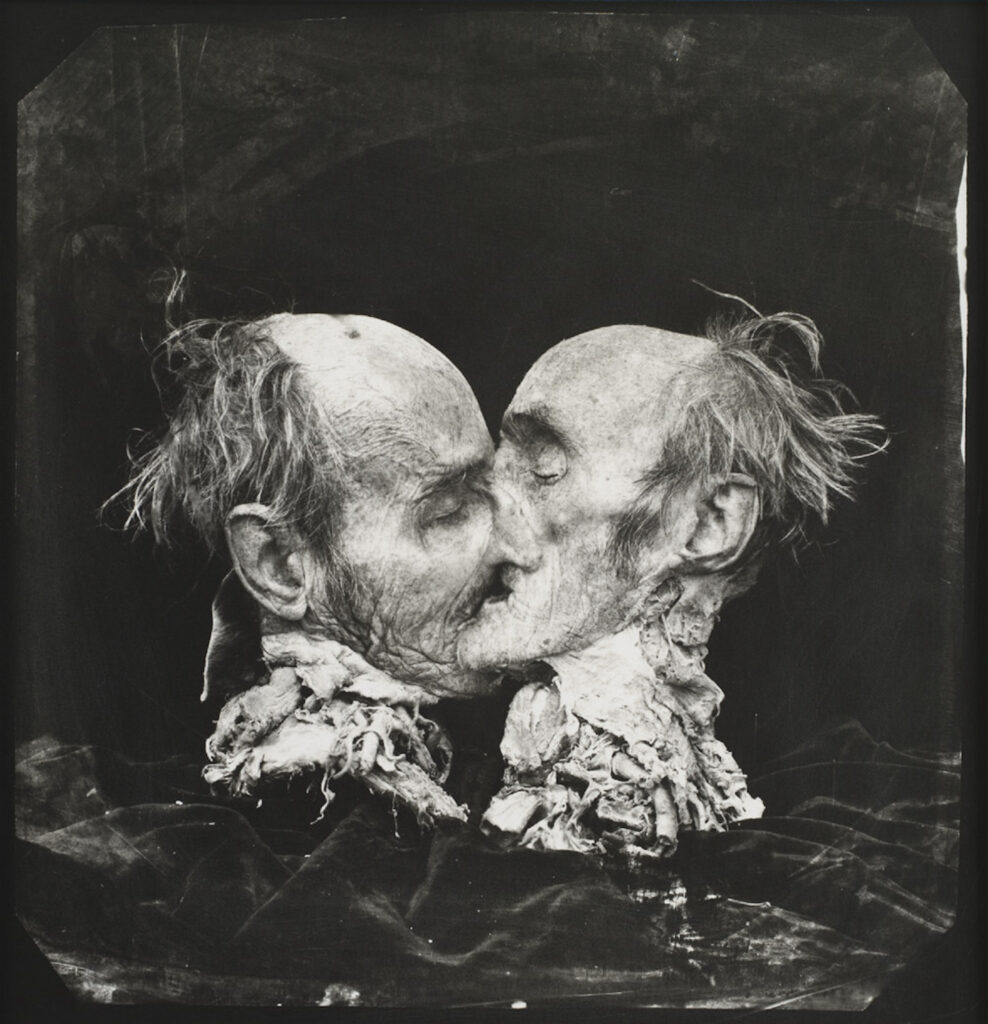
Indeed, much of Witkin’s work is rooted not just in curiosity, but in a desire to make people feel seen and understood. Although there are sexual themes in many images, and many fantasies can be seen in them, they are not pornographic in nature. The portraits of transsexuals or amputees, far from exploiting their otherness, calmly present their differences.
” I always hated the term ‘freak show because everyone is a monster said Witkin in a speech at the European House of Photography. ” We are all on earth to sublimate our spirituality, our mental and our physical, by ‘disinterested’ love and by the conviction that we are really citizens of another world, of Heaven. »
The exhibition at Galerie Baudoin-Lebon provides valuable insight into Witkin’s creative process, including the presentation of a pale blue painting that will serve as the backdrop for the photograph hanging next to it. To achieve his major works, Witkin spent months meticulously designing his paintings, using drawings and studies.
In the digital age, where photoshop opened up new possibilities, Witkin remained a photography purist, preferring collage and other printing techniques to image manipulation software.
Asked about his future plans, Witkin simply states that he is retired. ” I did the best I could, with the photography subjects that life gave me! he said. ” And I’m proud of what I’ve achieved! »
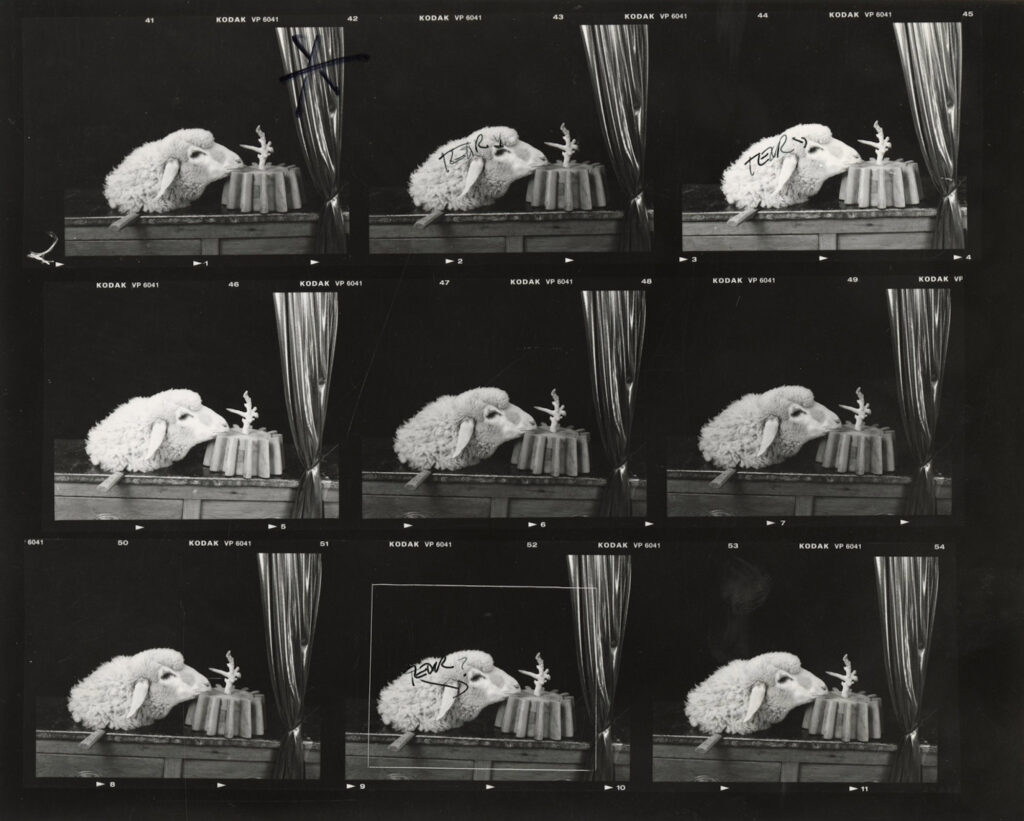
Exposure ” Joel-Peter Witkin: the untold story of photography » at the Baudoin-Lebon gallery until November 26th.
The exhibition ” Les Choses: A Story of Still Life is presented at the Louvre until January 23.
Joel-Peter Witkin or the beauty of the grotesque — Blind Magazine


